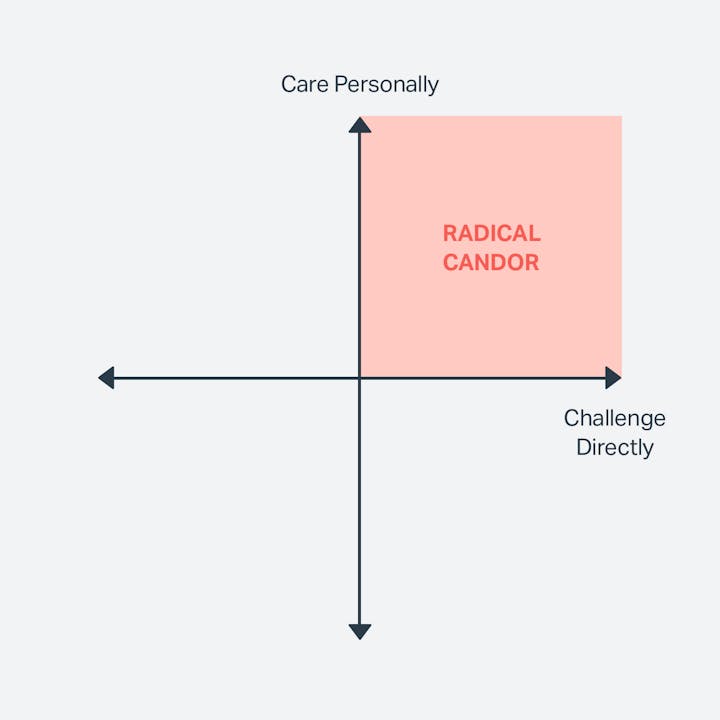A Customer Support Leader’s Guide to One-on-Ones


My first one-on-one as a manager started with me frantically googling "How to lead a one-on-one meeting." Perhaps that same search led you to this blog post. If so, welcome! You’re in good hands.
One-on-ones can motivate team members, increase productivity, and build a better working relationship with your team. Whether you’re new to one-on-ones or a veteran looking to improve your skills, read on to ensure you’re making the most of your time with your team members.
Try the customer support platform your team and customers will love
Teams using Help Scout are set up in minutes, twice as productive, and save up to 80% in annual support costs. Start a free trial to see what it can do for you.
Try for free
Why have one-on-ones in customer support?
As a customer support manager, your time has the most leverage when spent levelling up your team. If you spend 90 minutes on your own project or answering customer conversations, you’ll see a direct benefit. But if you spend that same time motivating and supporting your team members, the impact spreads further and lasts longer.
One-on-ones are critical to address common support team challenges like burnout, compassion fatigue, and a lack of career growth. By setting aside time each week, you can watch for early signs of disengagement and frustration before they become an issue.
Motivation can be hard to find when you’re dealing with an influx of tickets and an overflowing inbox. There isn’t always time for everyone to work on professional development tasks and burnout can happen quickly. There’s a tendency to bury our heads in the queue and wait for it to pass.
But just like meditation, being too busy to have one-on-ones is a great sign that you need to be doubling down on them. The most stressful, busiest times are when you’ll benefit the most from open, ongoing conversations with your team.
One-on-ones are great for keeping lines of communication open. When grievances are aired early, managers have more time to fix problems. Instead of reacting to unhappy employees threatening to walk out the door, you can proactively keep your team engaged and motivated.
The best support leaders create opportunities for growth that keep their teams engaged. Even as the work stays constant from week to week (after all, we have customers to help), leaders find ways to expose their teams to new challenges to keep them motivated and growing in their careers. One-on-ones are the first step in understanding what each team member needs to feel engaged in their work.
What does a one-on-one look like?
A one-on-one is typically held weekly or bi-weekly for 30 minutes to an hour. They should be held in private (head to a coffee shop if your office doesn’t believe in closed doors). For remote teams, use video calls to make it as close to meeting in person as possible. I like setting one-on-ones for the middle of the week to avoid the hectic Monday inbox rush and to prevent all the benefits from being lost over the weekend. Be purposeful with when you schedule one-on-ones to avoid putting undue pressure on the rest of the team.
The tone of a one-on-one can vary based on what your management style is like. I am pretty informal, so my one-on-ones often begin sitting on bean bag chairs chatting about donuts. Whatever you do, be yourself, be honest, and be present.
Remember that one-on-ones are not a status update meeting. They shouldn’t be used for your team to update you on their day-to-day activities or how things are going with a specific customer. One-on-ones are focused on people, not projects. Plus, if your direct reports are only bringing problems to you during their one-on-ones, it means projects are being delayed until they can talk to you. If you find yourself needing project or customer account updates, you might need to implement more tools to complement your workflow (like Trello for project management, or a CRM for customer health).
Running a successful one-on-one
Great, effective one-on-ones don’t just happen. They need to be planned.
In your first meeting, talk about what you want to accomplish with your team member. What do you picture your one-on-ones looking like? What do they want to get out of it? How do they like to receive feedback? Lara Hogan offers this list of questions you can ask to get the conversation flowing. Outlining what you expect your team member to bring to each meeting (and what they can expect from you) will help make the most of your time.
Once you’ve set a rhythm for your meetings, make sure you’re preparing the necessary information each week. For example, on Monday you might pull reports on the previous week’s support metrics for each agent. That way, you’ll have a list of positives and negatives to draw attention to in each meeting.
Keep notes during each one-on-one. Performance Management software like Lighthouse or Namely works really well to structure meeting notes, but a notebook or a Google Doc can work just as well. Keeping detailed notes helps you follow up on anything that needs more thought. It also can be helpful in identifying trends in your team member’s thoughts. A week of being frustrated about incoming volume is fine. But if you see the same frustration crop up every meeting for a couple months, it’s time to take action.
Finally, never cancel a one-on-one. If you really can’t make it, reschedule as early as possible. Constantly missing or moving meetings tells your team that they aren’t your top priority. While they’ll probably tell you it’s "fine" and there’s nothing they need to discuss, they still want to feel valued and important.
Here are four building blocks to a successful one-on-one (many of the example questions below came from Lighthouse’s excellent 87 questions to ask in a one-on-one blog post):
Build rapport
It might seem like a waste of time or too invasive, but building a close relationship with your employees helps smooth out all those bumps that come up in our working life. Gallup’s report on the State of the American Manager says that the working relationship between a boss and employee directly influences the success of team management. "Knowing their employees as people first, these managers accommodate their employees’ uniqueness while managing toward high performance."
Sample rapport building discussion points:
What’s one thing we could change about work for you that would improve your personal life?
What do you like to do in your free time? What are your hobbies? How are your children? Are you planning anything fun for (upcoming holiday)?
What’s something that frustrates you at work I could make easier for you?
Discuss career development
Gone are the days of 25-year-service pocket watches. Today, the average salaried employee will stay with their company somewhere between 3.2 and 4.6 years (according to US and UK government data). In order to prepare for their next role, employees are looking for opportunities to take on new challenges and level up their skills.
That skill development lands solely on the shoulders of management. According to (Deloitte University Press Research](http://dupress.com/articles/employee-engagement-strategies/), "two-thirds [of millennials) believe it is management's job to provide them with accelerated development opportunities."
Approach career development discussions with the knowledge that your team member won’t be on your team forever. Indeed, it would be a failure of your management if they didn’t spread their wings to new things. But it’s a win-win situation. As they develop their skills, your team will see the benefits: a more skilled and engaged employee.
Career development discussion points:
Talk about long term goals. What does their career look like in 5 years, 10 years?
Identify their strengths. Where can these be put to use in the current team?
What skills or qualifications will they need to accomplish their goals? How can they work within the team to develop them?
Give feedback
Feedback includes both the good and the bad. A one-on-one is an excellent time to lavish your team member with praise for how they handled a recent situation. Appreciation is a great motivator. In fact, 79% of employees report "a lack of appreciation" as the reason for leaving their last job, according to the book Appreciate: Celebrating People, Inspiring Greatness.
Approach feedback with a mindset of wanting the best for your employee. When giving constructive feedback, remember you aren’t out to get them or simply point out mistakes. Provide feedback that will genuinely help them meet their goals, and do so directly. If you struggle providing direct feedback, I highly recommend reading "Radical Candor" by Kim Scott.

Feedback discussion points:
"I wanted to talk about (situation). How did you think that went?"
Pass on positive feedback from other departments.
Identify areas where they aren’t meeting their benchmarks (e.g., number of ticket touches, customer satisfaction scores) and work on a plan to improve.
"How do you feel about the way we rolled out X?"
Check in on happiness
Finally, sitting down with your team members once every couple weeks is just a good time to get a barometer reading on how things are going. For many new managers, this is the most obvious benefit of one-on-ones.
Silence is your friend. When you ask "How is everything going?" the first response is almost always going to be “Yeah, good.” Instead of moving on quickly, just sit there silently. They’ll offer more about how things are actually going.
Happiness discussion points:
Anything else you’d like to talk about?
What’s worrying you right now?
What are you happiest doing at work?
What are you most proud of accomplishing this week?
7 foundational tips for building a thriving customer support team and department from scratch.
7 foundational tips for building a thriving customer support team and department from scratch.
Building and Leading a Support Team
Takeaways
One-on-ones aren’t just about the conversation during that 30 minutes. Often things will come up that require further discussion or action. Make sure to follow up as needed, especially if something needs to happen before the next one-on-one.
Revel in small, incremental progress. Even if the queue is busy and it’s difficult to make progress on bigger goals, keep meeting with your team and keep identifying small wins.
The Supportive Weekly: A newsletter for people who want to deliver exceptional customer service.